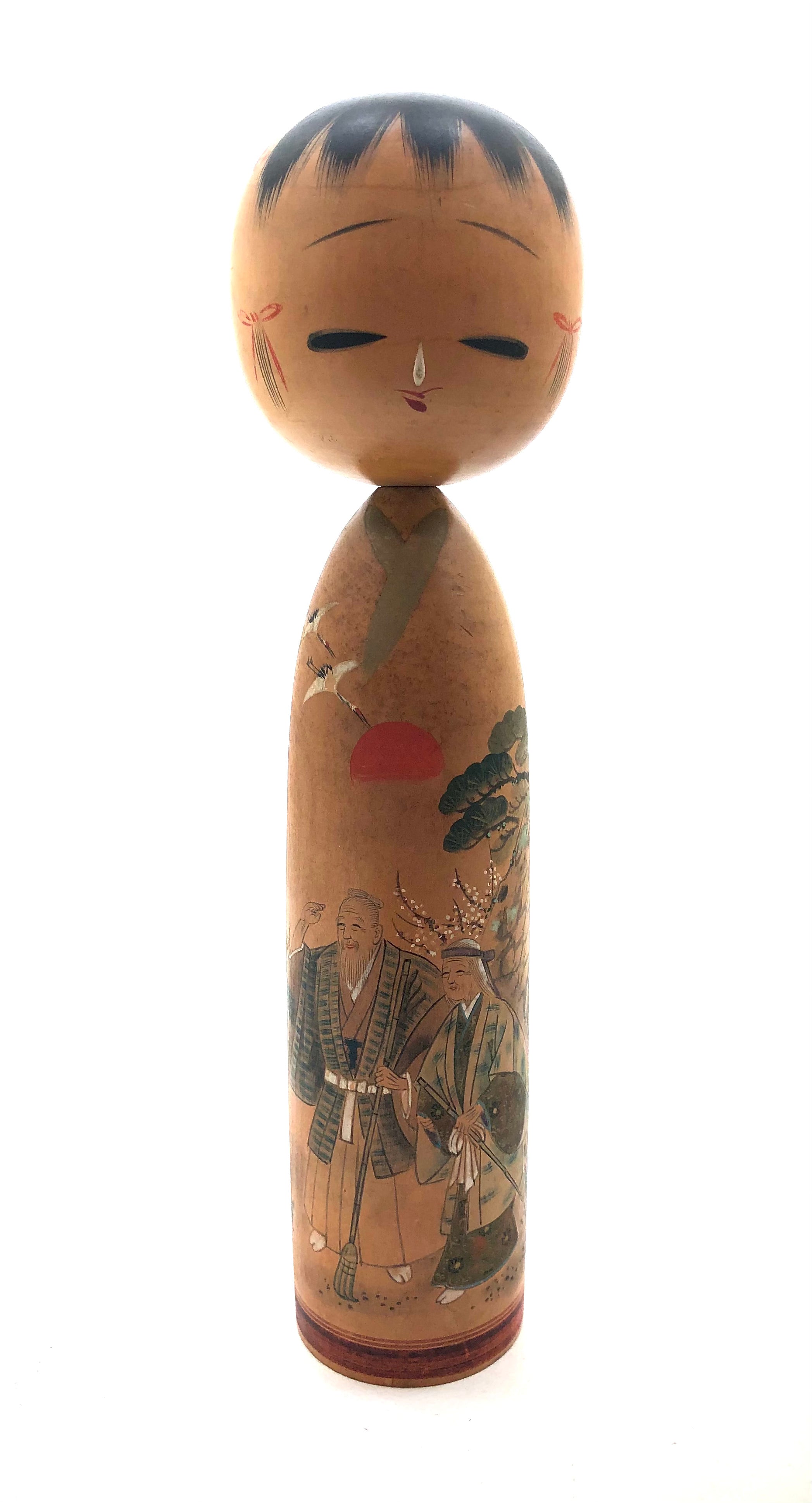
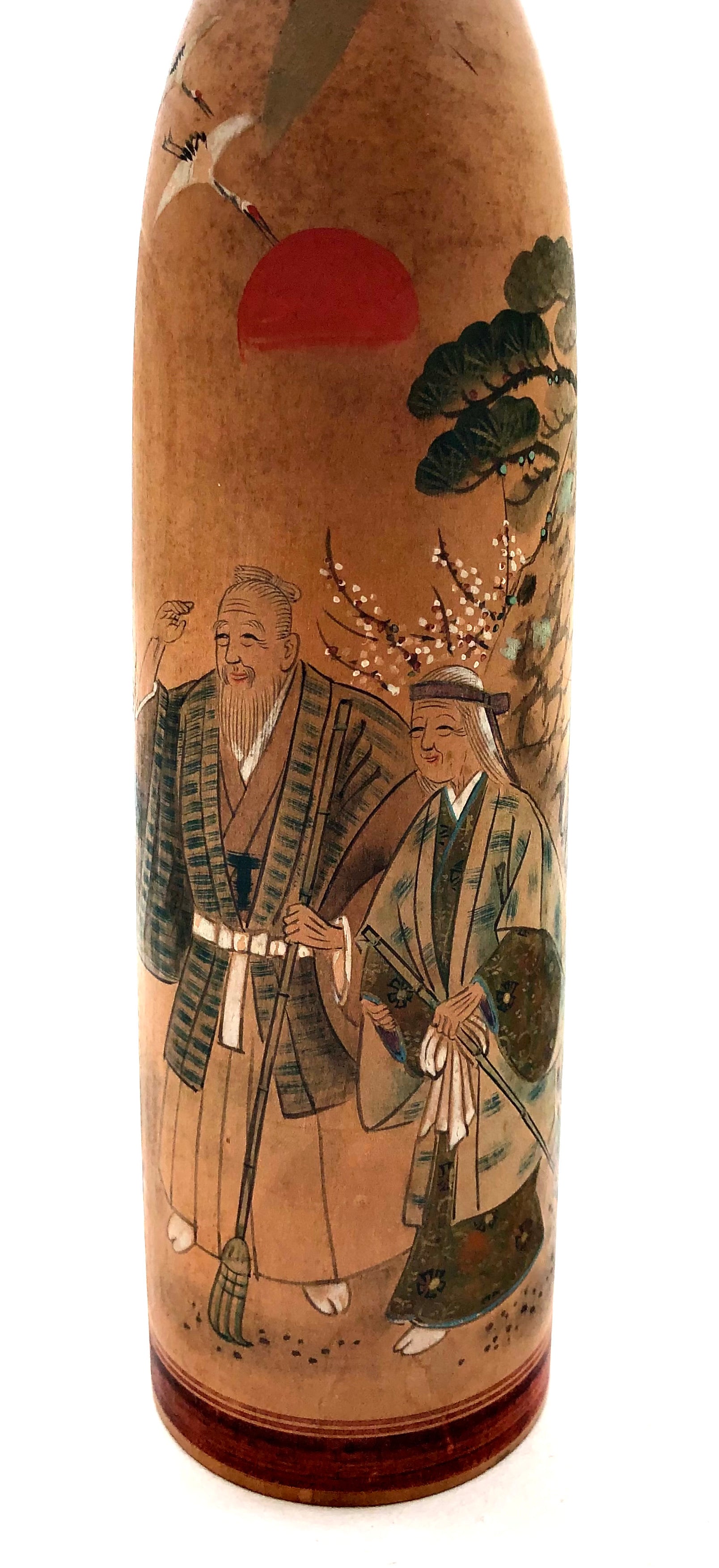
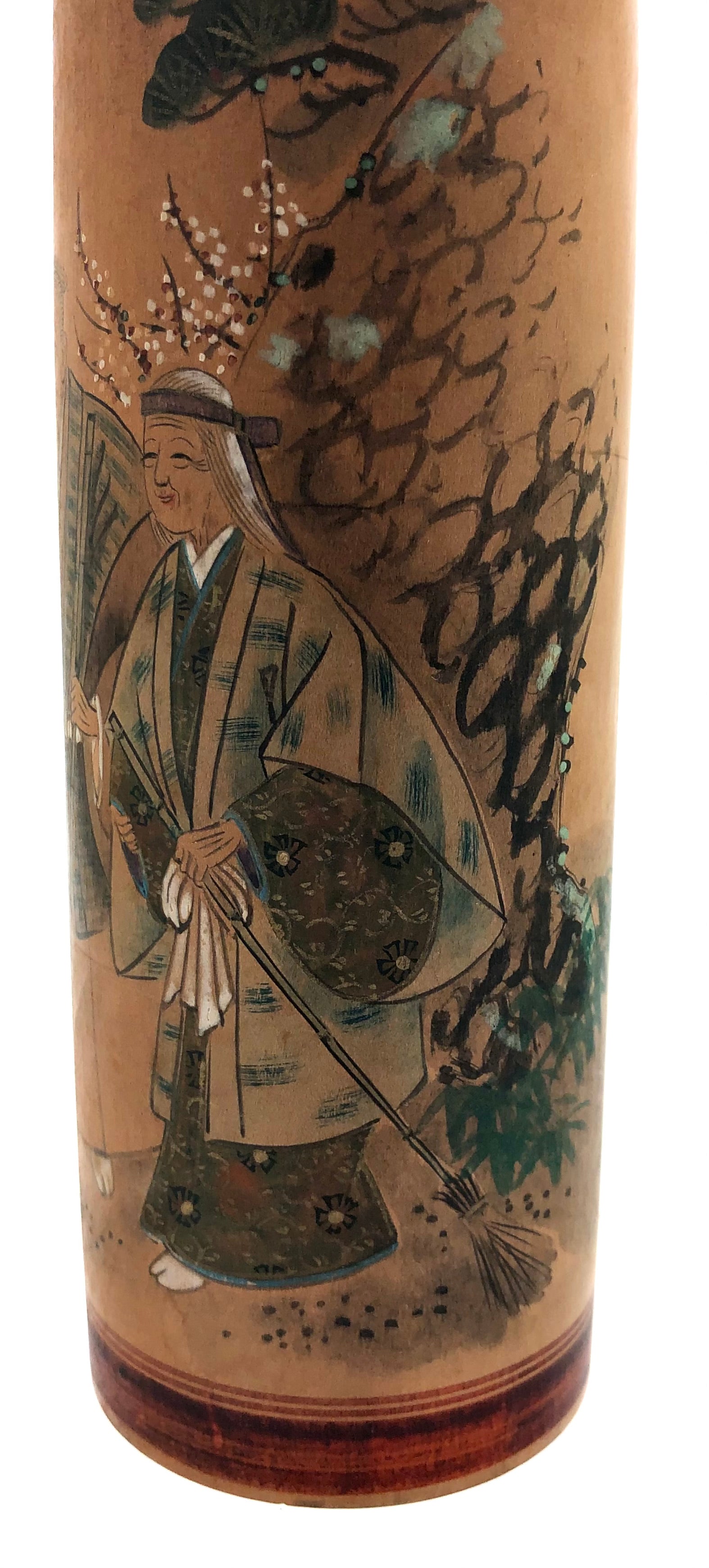
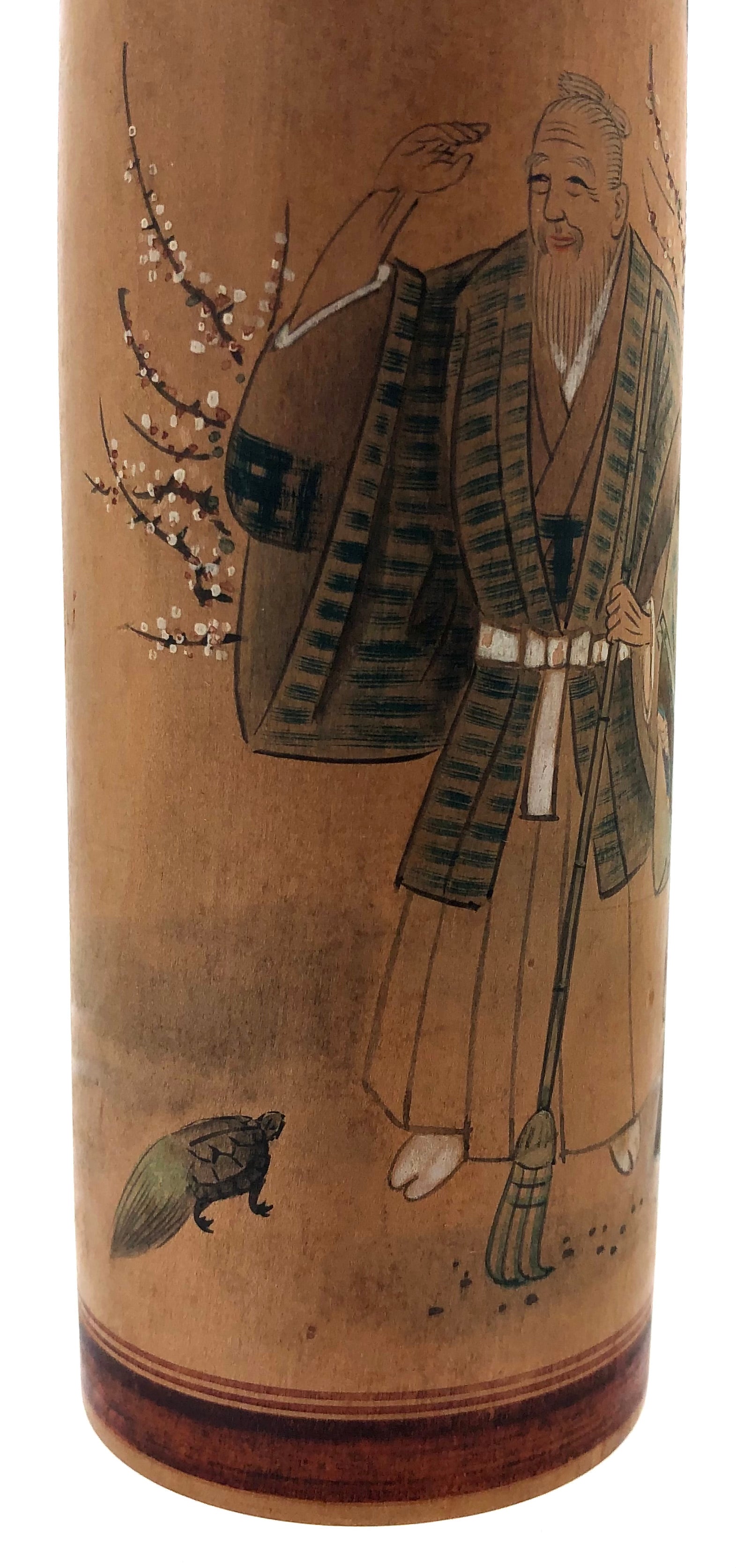
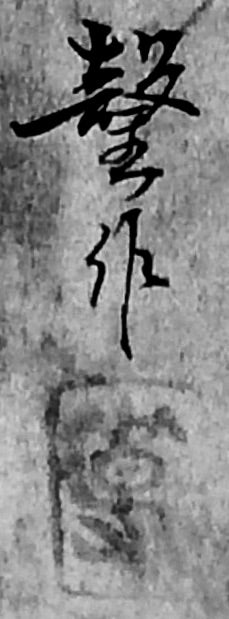
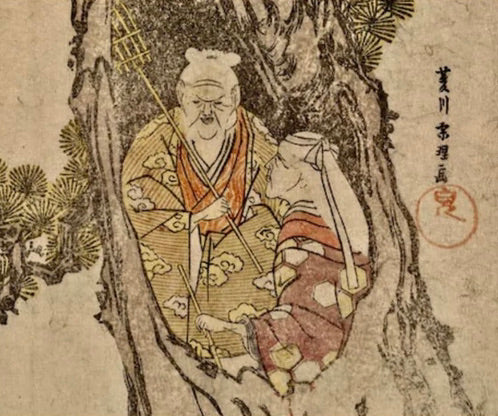
Traditional Takasago Kokeshi by Kei (Hideo) | The Takasago Couple (Jou and Uba)
Dimensions: 11-1/2” h
There is little known about this painter of sacred places, for he was an obscure artist, (obscure to the Kokeshi world), with only his name beautifully inscribed onto the body of this doll. Kei, (Hideo as he was known by fellow painters), was under government sponsorship at various temples and shrines in Central Japan. His artistic works blended an original style based on Buddhist beliefs, folklore, all of which possessed realism, grace, and a strong spiritual aesthetic. The Takasago Shrine in Takasago City, Hyogo, (Osaka Prefectures), and their practices inspired this piece that was strongly influenced by Noh chant and legend. Because this is a one-of-a-kind piece, it was meant to be an omiyage, (gift to show gratitude, respect, and a way to strengthen and maintain relationships), with no other dolls cited to be made by this artist. There is no recorded biographical information on Kei-san, therefore has not been included in the 2022 publication on Sosaku Kokeshi: Celebrating the Major Artist of the Creative Movement by Evans and Wolf.
This beautifully painted Kokeshi, is one of the original 'Transitional', lathe-turned figures fostering this creative movement, (period of transition between Traditional and Creative movements). Kei falls into the two categories of Kokeshi making and is known as a Kokeshi artist that incorporated both traditional and creative elements, and created this one-off piece that exemplified his painterly skills.
Featured in this doll is what is known as a Takasago Couple, and exemplifies the legend of this contented couple. It is one of Japan's oldest folktales, that continues to be performed in the Noh Theater by the same name, Takasago. The elderly man is called Jou and the elderly woman Uba, and as a couple, they are called Jotomba. This basic concept behind the beautiful doll is depicted as an ancient couple, as the old woman sweeps away all the bad that was left behind, and the old man gathers in with his rake all that is good and desirable. Deeply devoted in life, the old couple passed away within moments of each other, and their spirits were transformed into pine trees: Jou a black pine, and Uba a red pine, which are shown along with cherry blossom branches in the background of this doll. It is not unusual to see them as illustrated in traditional clothing in full color and accompanied by two flying cranes, (Tsuru) and a tortoise, (Nihon ishigame), which is so old it has a train of seaweed growing on its back, and a symbol of longevity and felicity. All the images are delicately hand-painted with a traditional head and features, and showing their embodiment in full color representing their spirit, with the two figures positioned in front of the red “rising sun”, which was regarded as a mighty goddess as well as Japan’s symbol during the Edo period. The dolls are exceptionally rare and any work of this type is sought after by collectors of painterly folk craft.
Antique Condition: Excellent, original condition, with no fading or loss of color and consistent with age and standards of collectible Folk Art. Hand drawings are exceptional and beautifully rendered by a painterly artist. We rarely see pieces of this intricate quality, and details available on the market.
